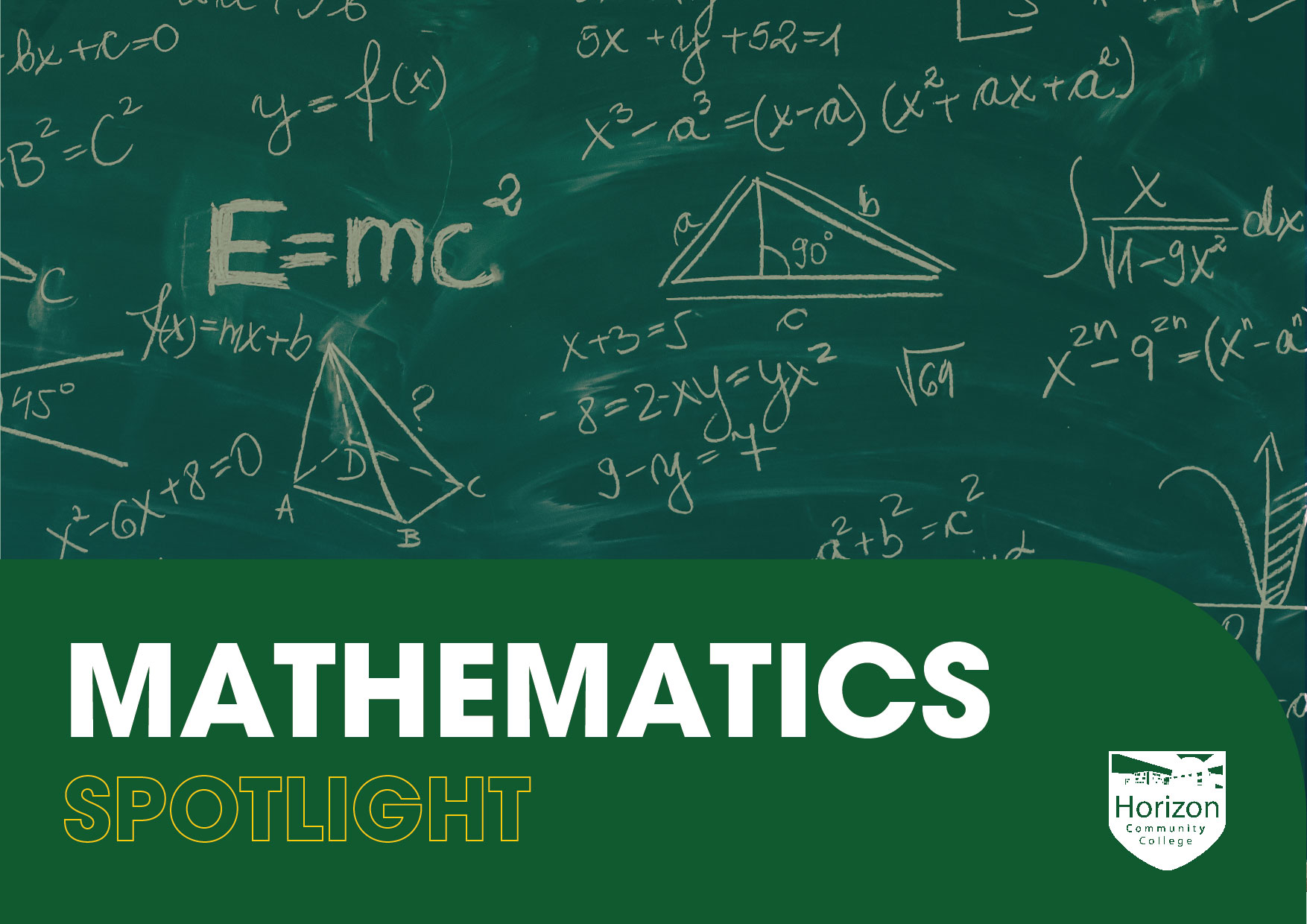CURRICULUM
Maths
Maths Curriculum Intent
Mathematics increases students’ resilience for problem solving when they have limited information. It teaches them how to think and work systematically, critically analyse information and effectively communicate the steps within their thinking. Our curriculum adopts a ‘no tricks’ approach to teaching, developing a growth mindset: everybody can do mathematics. We aim to increase awareness and understanding of where the mathematics is used in the real world to enable our students to be ‘school ready, work, ready, life ready’.
Click here to see where Maths can take you
MATHS STRANDS
Number
Number is interleaved throughout the five years. Number includes teaching students about numerical structure and calculation, fractions, decimals and percentages and measures and accuracy.
Algebra is interleaved throughout the five years. Algebra includes teaching student’s algebraic notation, vocabulary and manipulation, graphs, solving equations and inequalities and sequences.
Algebra
Ratio, Proportion, and rates of change
Students begin to learn about proportion through calculating and using fractions and percentages. They are introduced to proportion in y8 and ratio in y9. Within this content the students are taught to use ratio notation, simplify ratios, and divide quantities using ratios. In y10 and y11 this content is linked to algebra and graphs to support students understand how to calculate rates of change e.g. gradient of a line.
Geometry and measures are interleaved throughout the five years. Within this content students are taught the properties of 2D and 3D shape and how to construct them. They are also taught how to calculate perimeter, area and volume of shape and use units of measurement. They learn about angle facts and bearings and when they reach KS4 they are introduced to Pythagoras and Trigonometry to calculate missing sides and angles in triangles.
Geometry and Measures
Probability
Probability is interleaved throughout the five years. In this are of maths students learn to apply their knowledge of fractions, decimals, and percentages to calculate likelihood and chance of events occurring both theoretically and experimentally. Students are taught how to use tables and diagrams such as sample space diagrams, tree diagrams and Venn diagrams to help them calculate independent and dependent events.
Statistics is interleaved throughout the five years. The core of the statistics content is to teach students both how to draw and interpret a variety of graphs and charts such as bar charts, pie charts and frequency polygons in ks3. In Ks4 students are introduced to cumulative frequency, box plots and histograms. Students are also taught about different types of data, sampling and the importance of bias.
